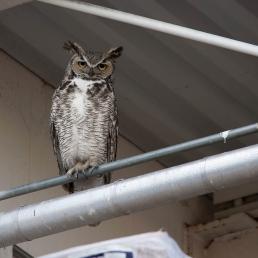

Join BirdNote tomorrow, November 30th!
Illustrator David Sibley and actor H. Jon Benjamin will face off in the bird illustration battle of the century during BirdNote's Year-end Celebration and Auction!
May 31st – June 3, 2012
What a sanctuary Malheur National Wildlife Refuge is! The U. S. Fish and Wildlife brochure begins by saying, “One of the crown jewels of the National Wildlife Refuge System, Malheur National Wildlife Refuge protects a vast complex of wetlands in Oregon’s high desert. The refuge is famous for its tremendous diversity and spectacular concentrations of wildlife ... over 320 bird species and 58 mammal species … In 1908, President Theodore Roosevelt designated Malheur a sanctuary for birds.”
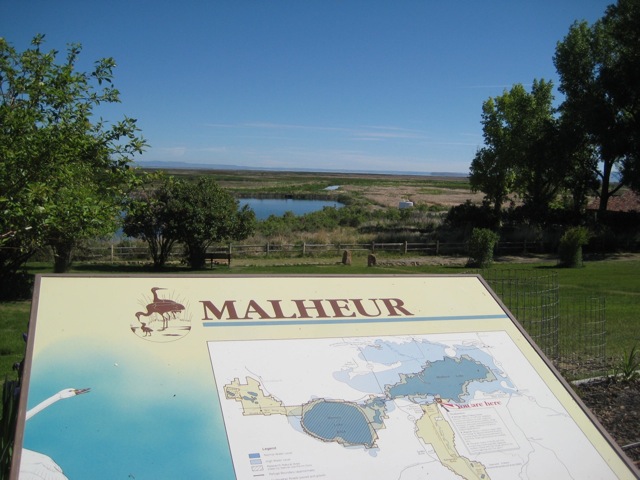
BirdNote editor, Todd Peterson, and I joined 12 other members of the Klamath Bird Observatory for a four-day adventure with professional birding guide, Harry Fuller, and hawk expert and KBO president, Dick Ashford (a board member of American Birding Association). Harry (left) and Dick (right) are energetic birders, to say the least! We’d be out birding 10 to 12 hours a day.
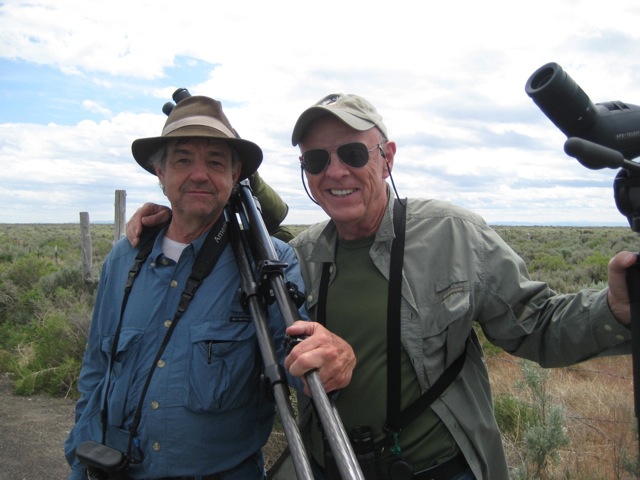
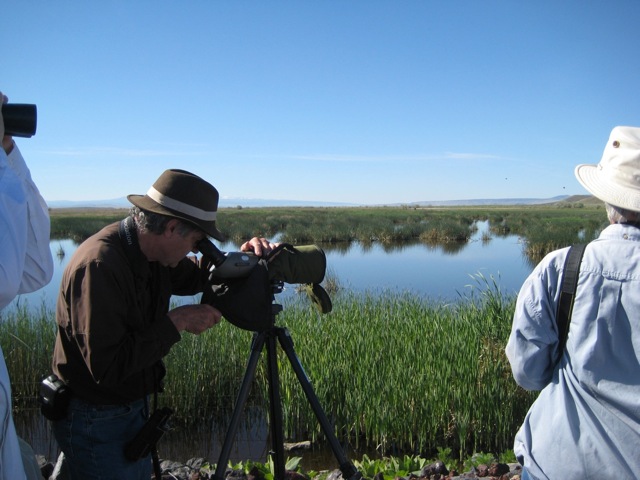
At times, we’d be on the edge of a vast wetland, witnessing the spring cacophony produced by American White Pelicans, White-faced Ibises, Black-necked Stilts, American Avocets, Marsh Wrens, Cliff Swallows, Willets, and Wilson's Snipes. Even Soras and Virginia Rails could be heard. Franklin’s Gulls swirled overhead by the hundreds. Sandhill Cranes called in the distance. Birds as far as the eye could see, and the ear could hear!
Then we’d head out to the basalt cliffs along Highway 205, keeping our eye out for whitewash on the rocks. Sure enough, that would signal the presence of nesting Great Horned Owls, Prairie Falcons, Barn Owls, and Common Ravens.
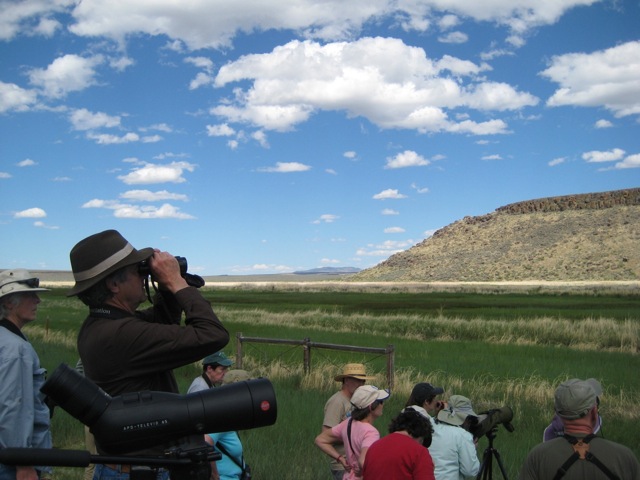
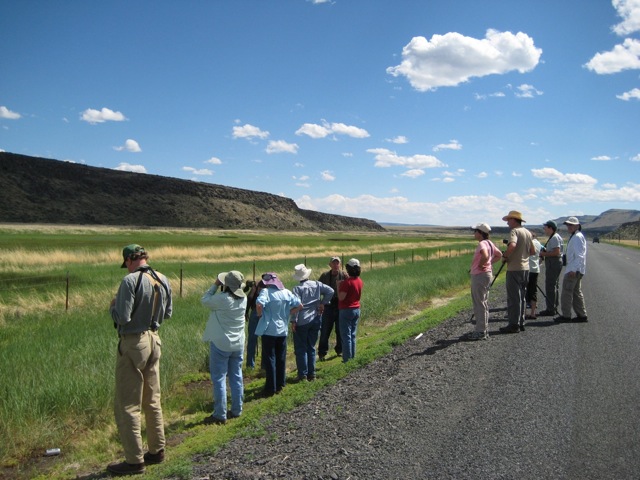
One evening, a spectacular thunderstorm rolled in, creating extraordinary patterns of light on the landscape. The thunder rolled and rolled through the Great Basin.
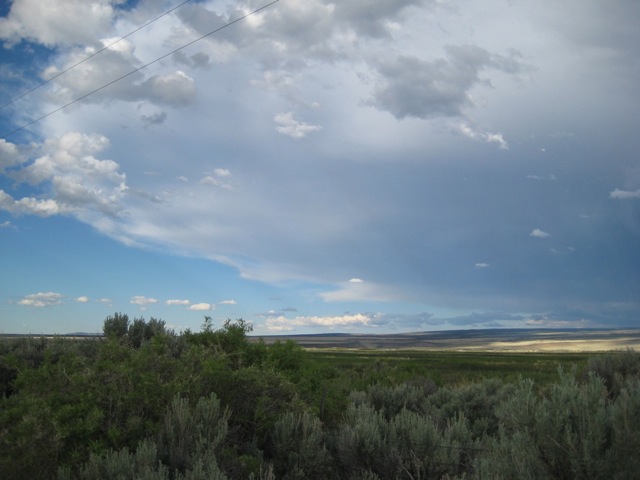
The next day at the refuge headquarters, we delighted in spotting a family of Great Horned Owls and finding a wayward Rose-breasted Grosbeak. They’re mostly a bird of the eastern side of the Rockies.
But my “rose-breasted grosbeak” experience came when a man approached to ask about my microphone. I soon realized I was in the company of a professional bird audio recordist – one who records for Macaulay Library at the Cornell Lab of Ornithology. He was Dave Herr, whose recordings we have incorporated into many BirdNote shows. What a treat to meet one of my heroes!
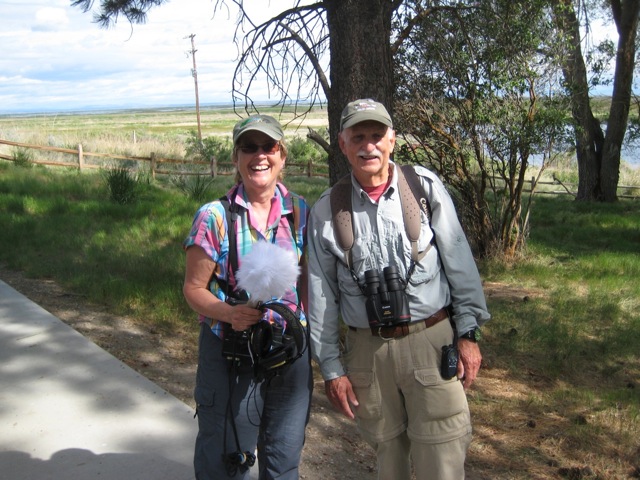
Wind can be a real problem when recording, so to cut down on the sound of wind, professionals use a microphone cover they call a “dead kitty.” Before leaving for this trip, I made one and found it to work well. That’s why my microphone looks like a puffball.
Malheur is hardly all wetland. Another day we, the KBO group, were back out in arid country, searching for the elusive Brewer’s Sparrows and Sage Sparrows and Sage Thrashers.
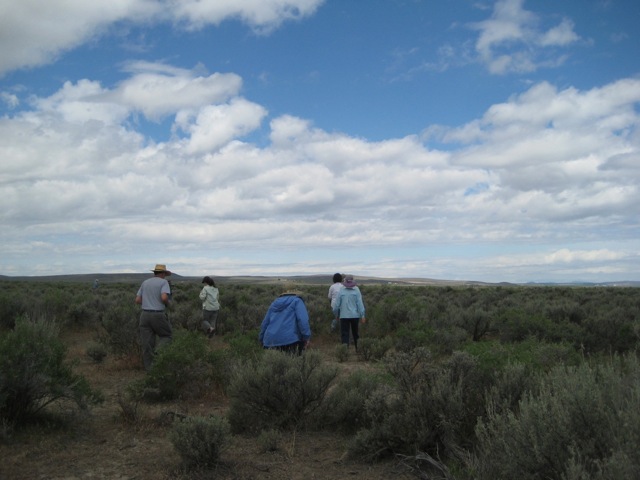
And then it was off to find Burrowing Owls, which, I learned, create a sound like a rattlesnake when they feel threatened (we were hundreds of yards away). Here’s Todd with his turn at the scope.
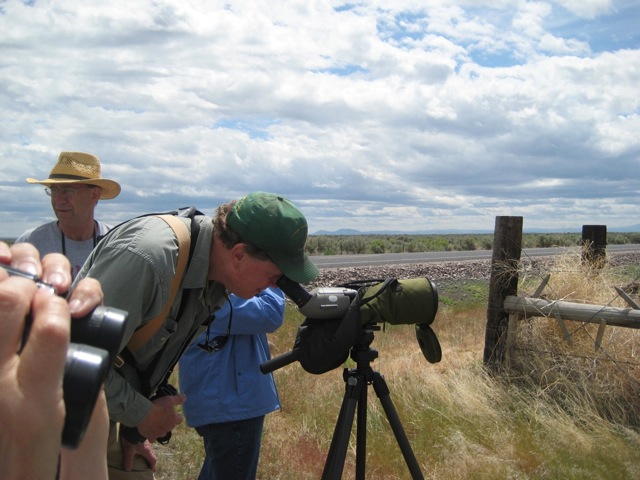
Between Malheur Lake and Harney Lake, in an area called The Narrows, we saw day-old Clark’s Grebe chicks. This photo was taken by Clair and Susan de Beauvoir, nature photographers who happened to be out there at the same time as our KBO group.
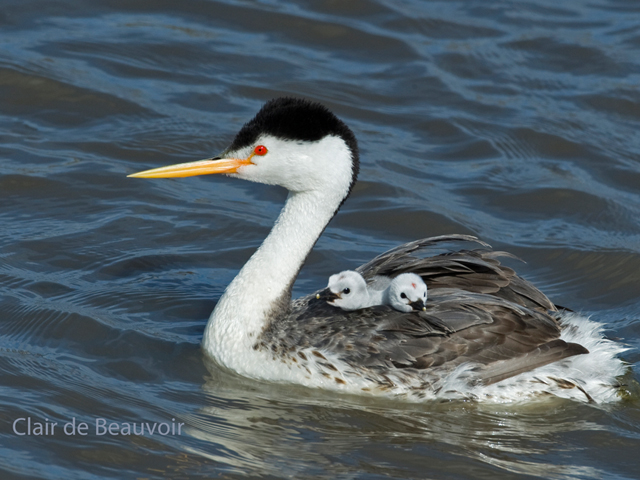
Trip leader Dick Ashford knows his raptors and, with the help of his trained eye, we were able to identify several Golden Eagles, Bald Eagles, Prairie Falcons, Ferruginous Hawks, Swainson’s Hawks, Northern Harriers, and Red-tailed Hawks. Raptors love the rocks and the region along Highway 78. As for the irrigated, farm fields along that same route, well, I’d never seen so many Long-billed Curlews probing for dinner!
Birds visit or reside at Malheur National Wildlife Refuge because it is truly an oasis in the middle of miles and miles of desert. Many were feeding on insects as was, apparently, our car:
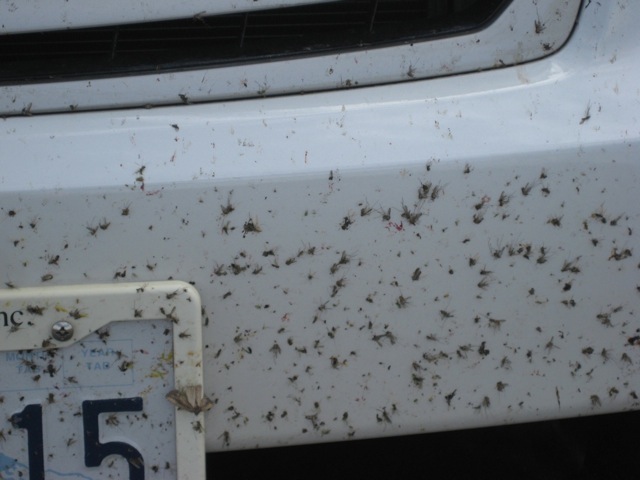
All too soon, it was time to leave the refuge behind, to head out into the high desert, northwest to Washington. Here’s a scene looking back:
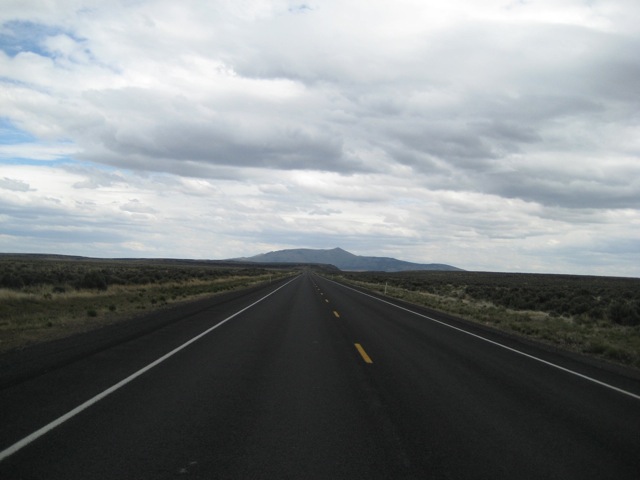
Here are two of many memorable scenes I’d like to share with you:
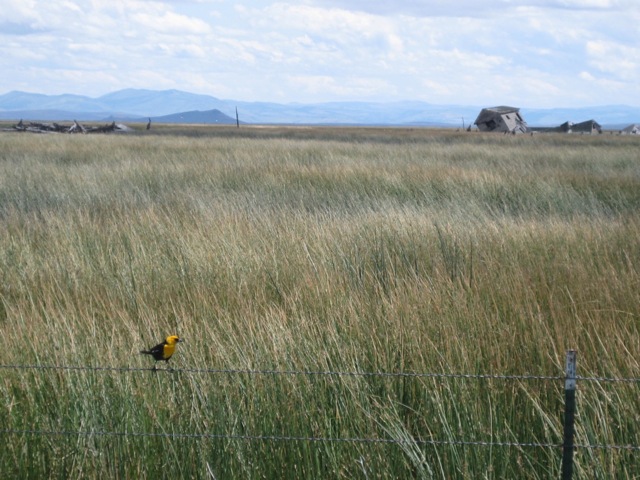
Imagine the sound track for the gorgeous colors in this photo – this Yellow-headed Blackbird was just one of hundreds along the road!
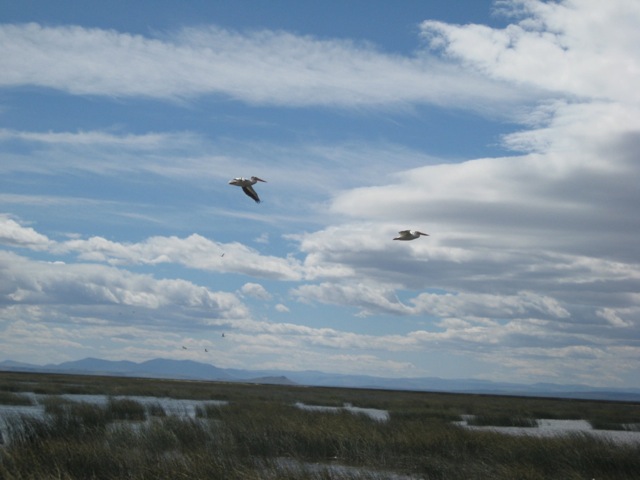
Several BirdNote shows will come from this adventure. Stay tuned! And remember – national wildlife refuges belong to us all!
I hope you can enjoy one that’s near you!
Chris Peterson, Executive Producer, BirdNote
